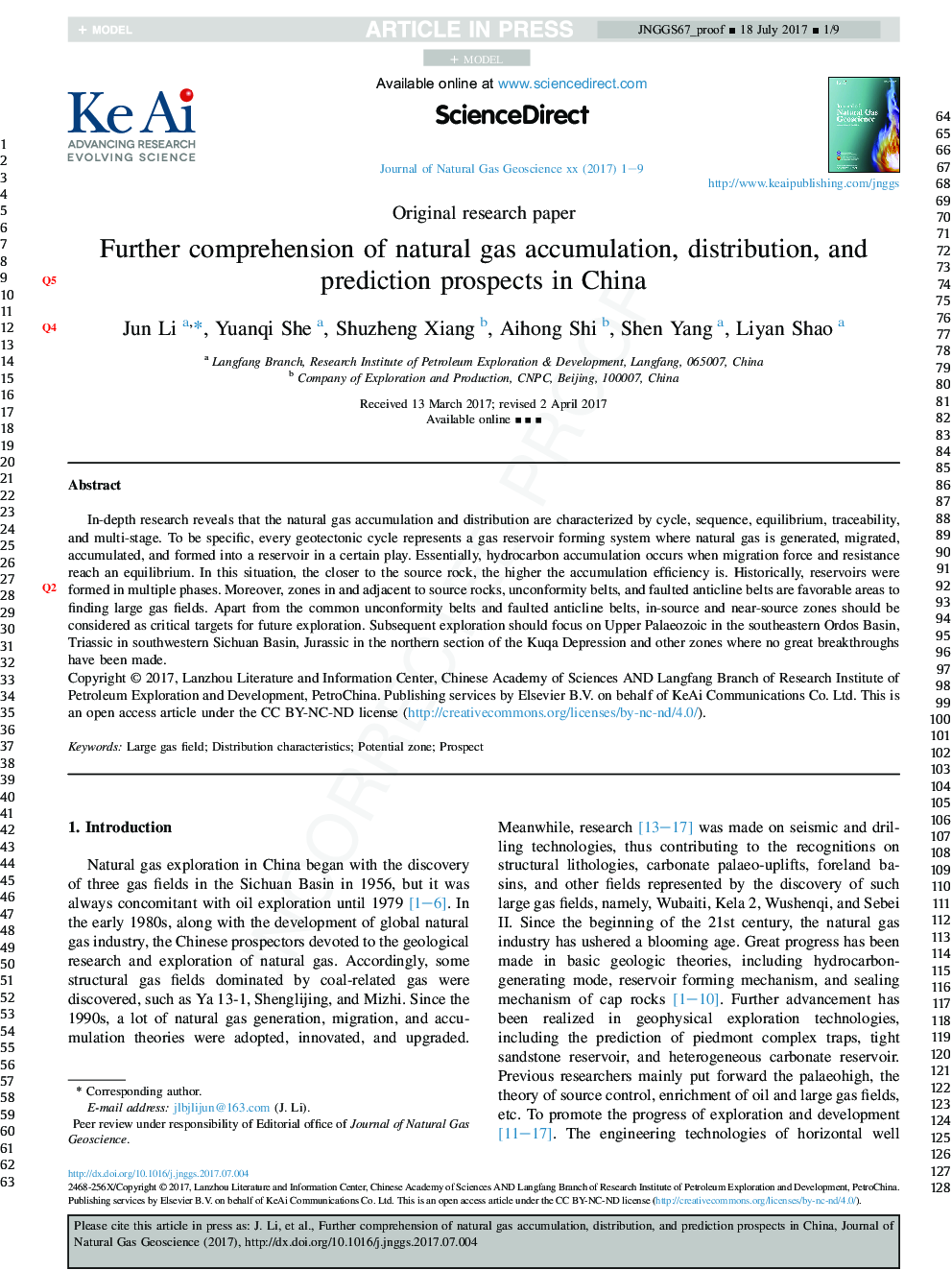| Article ID | Journal | Published Year | Pages | File Type |
|---|---|---|---|---|
| 8124207 | Journal of Natural Gas Geoscience | 2017 | 9 Pages |
Abstract
In-depth research reveals that the natural gas accumulation and distribution are characterized by cycle, sequence, equilibrium, traceability, and multi-stage. To be specific, every geotectonic cycle represents a gas reservoir forming system where natural gas is generated, migrated, accumulated, and formed into a reservoir in a certain play. Essentially, hydrocarbon accumulation occurs when migration force and resistance reach an equilibrium. In this situation, the closer to the source rock, the higher the accumulation efficiency is. Historically, reservoirs were formed in multiple phases. Moreover, zones in source rocks and adjacent to source rocks, unconformity belts, and faulted anticline belts are favorable areas to finding large gas fields. Apart from the common unconformity belts and faulted anticline belts, in-source and near-source zones should be considered as critical targets for future exploration. Subsequent exploration should focus on Upper Palaeozoic in the southeastern Ordos Basin, Triassic in southwestern Sichuan Basin, Jurassic in the northern section of the Kuqa Depression and other zones where no great breakthroughs have been made.
Related Topics
Physical Sciences and Engineering
Earth and Planetary Sciences
Geochemistry and Petrology
Authors
Jun Li, Yuanqi She, Shuzheng Xiang, Aihong Shi, Shen Yang, Liyan Shao,
